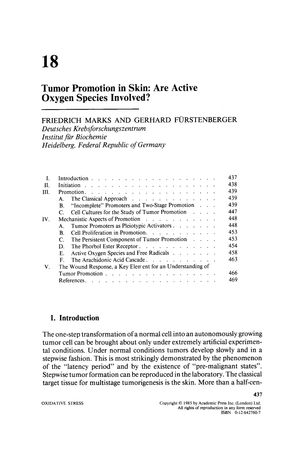Tumor Promotion in Skin: Are Active Oxygen Species Involved?
January 1985
in “
Elsevier eBooks
”

TLDR Active oxygen species might be involved in skin tumor growth, but their exact role is unclear.
The 1984 study "Tumor Promotion in Skin: Are Active Oxygen Species Involved?" investigated the role of active oxygen species in skin tumor promotion. The researchers found that wounding or treatment with chemical irritants accelerated tumor development in mouse skin. They also found that phorbol ester tumor promoters led to a hyperplastic state in the skin, which is a general response to irritation and damage. The study also explored the role of TPA (Tetradecanoylphorbol acetate) in skin tumor promotion, noting that TPA treatment induced inflammation and hyperplastic growth, key symptoms of tumor promotion. However, the exact mechanisms and pathways involved were not fully understood. The study found indirect evidence suggesting that active oxygen species might be involved in tumor promotion, but no evidence existed for a critical role of active oxygen species in stage I of promotion. The role of active oxygen species in stage II of promotion remained unclear. The researchers also found conflicting results regarding the effects of non-steroidal anti-inflammatory agents on skin tumor promotion. The study concluded that understanding the wound response could provide insights into the mechanisms of skin tumor promotion.